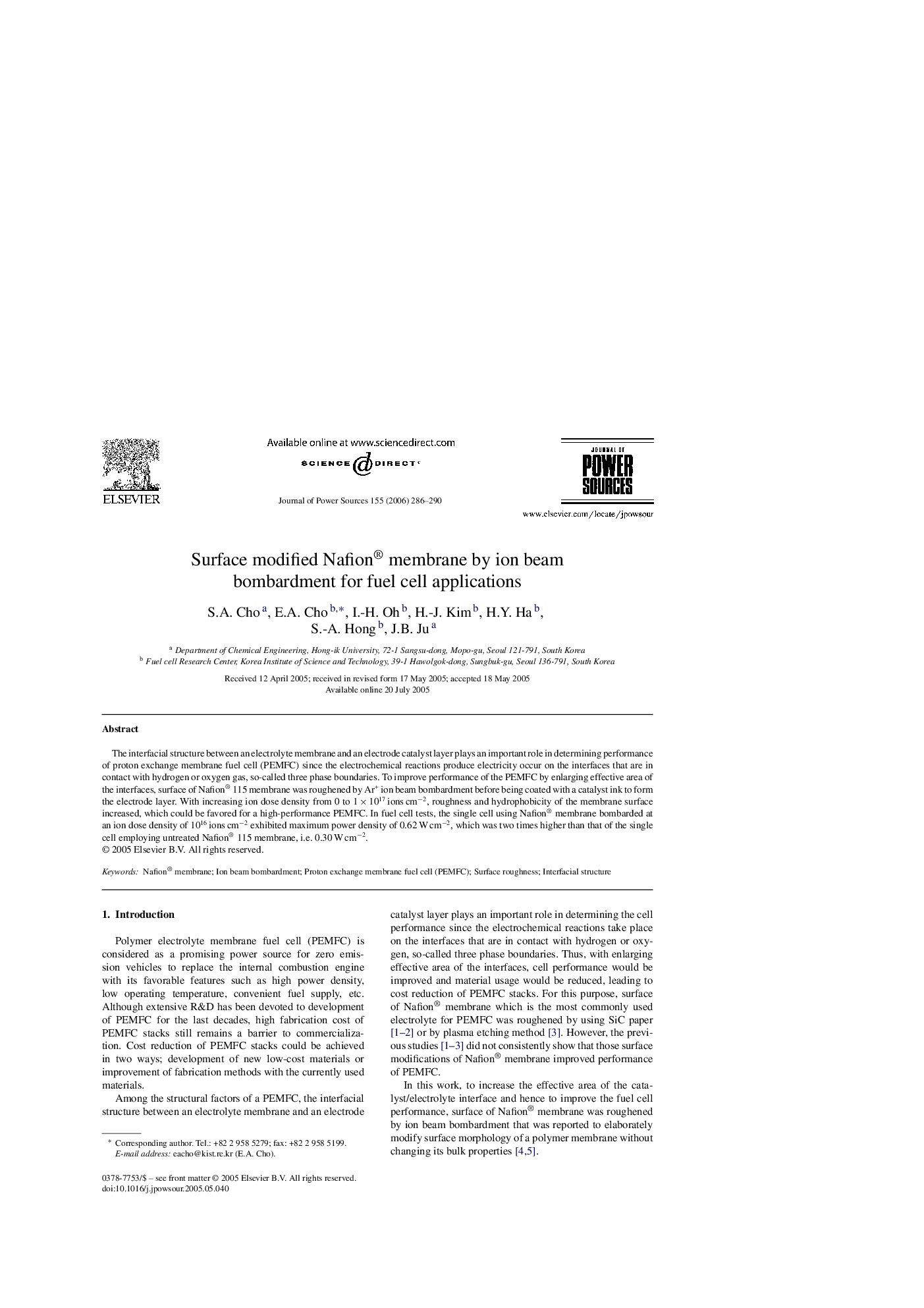| Article ID | Journal | Published Year | Pages | File Type |
|---|---|---|---|---|
| 1287903 | Journal of Power Sources | 2006 | 5 Pages |
Abstract
The interfacial structure between an electrolyte membrane and an electrode catalyst layer plays an important role in determining performance of proton exchange membrane fuel cell (PEMFC) since the electrochemical reactions produce electricity occur on the interfaces that are in contact with hydrogen or oxygen gas, so-called three phase boundaries. To improve performance of the PEMFC by enlarging effective area of the interfaces, surface of Nafion® 115 membrane was roughened by Ar+ ion beam bombardment before being coated with a catalyst ink to form the electrode layer. With increasing ion dose density from 0 to 1 Ã 1017 ions cmâ2, roughness and hydrophobicity of the membrane surface increased, which could be favored for a high-performance PEMFC. In fuel cell tests, the single cell using Nafion® membrane bombarded at an ion dose density of 1016 ions cmâ2 exhibited maximum power density of 0.62 W cmâ2, which was two times higher than that of the single cell employing untreated Nafion® 115 membrane, i.e. 0.30 W cmâ2.
Keywords
Related Topics
Physical Sciences and Engineering
Chemistry
Electrochemistry
Authors
S.A. Cho, E.A. Cho, I.-H. Oh, H.-J. Kim, H.Y. Ha, S.-A. Hong, J.B. Ju,
